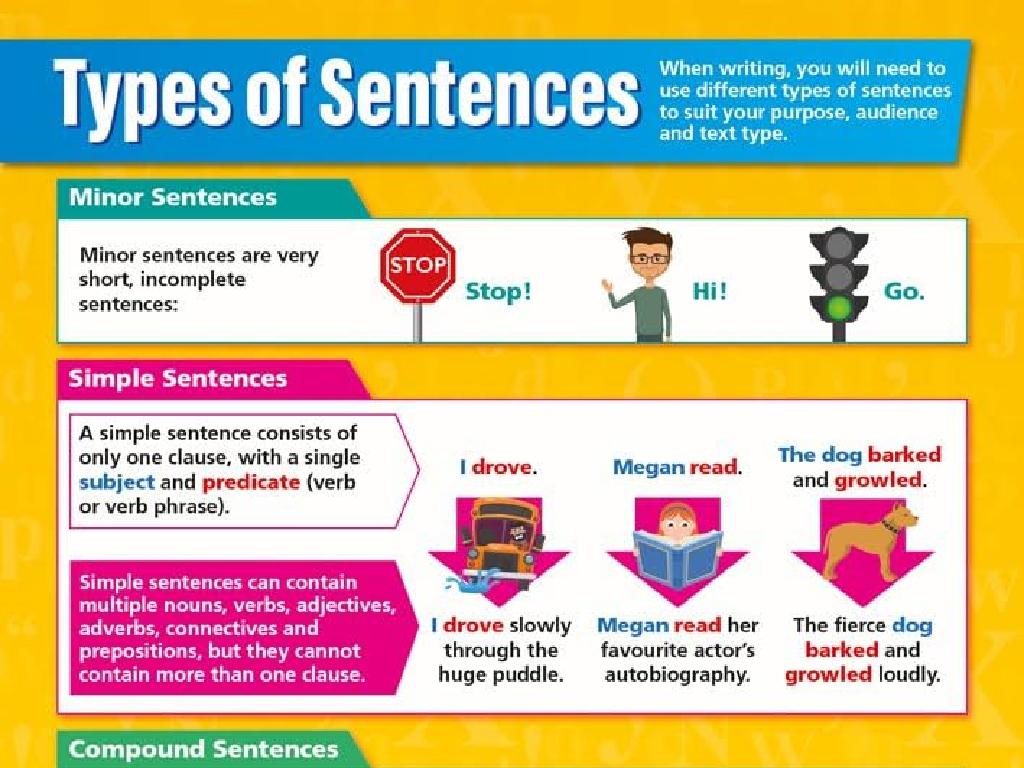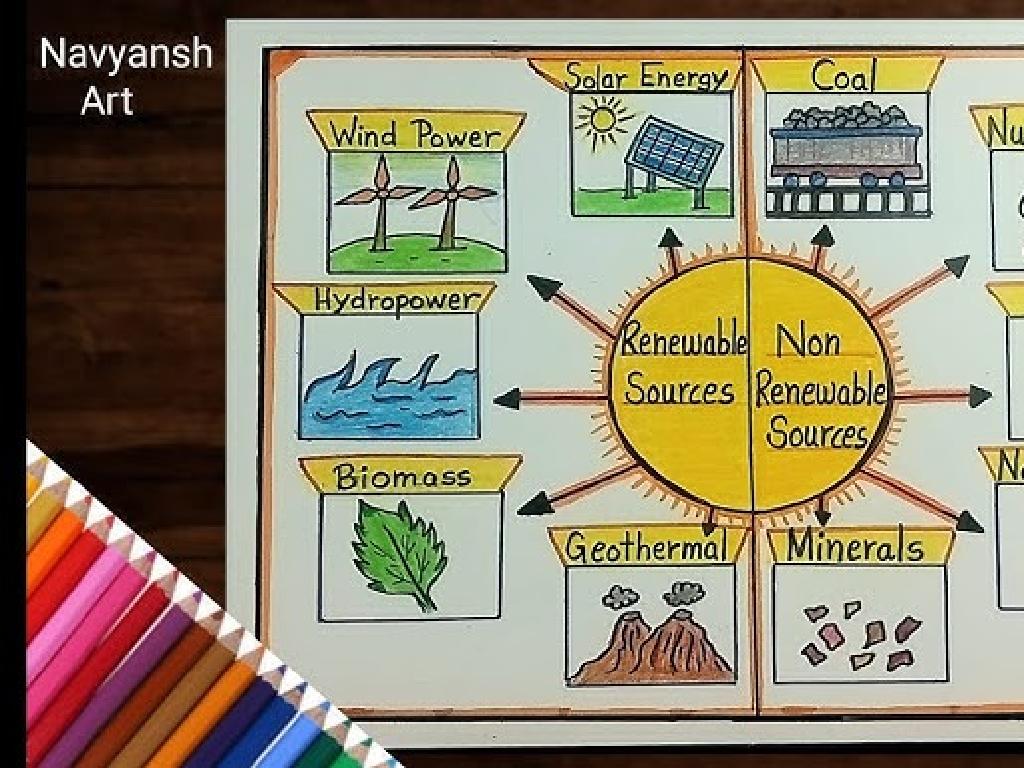Rewrite The Sentence In Active Voice
Subject: Language arts
Grade: Eighth grade
Topic: Active And Passive Voice
Please LOG IN to download the presentation. Access is available to registered users only.
View More Content
Active vs. Passive Voice
– Understanding sentence structure
– Defining Active Voice
– Subject performs the action, e.g., ‘The cat chased the mouse.’
– Explaining Passive Voice
– Subject receives the action, e.g., ‘The mouse was chased by the cat.’
– Significance of Active Voice
– Active voice makes sentences clearer and more direct.
|
This slide introduces the concept of active and passive voice, which is crucial for effective writing. Begin by discussing sentence structure and how the subject, verb, and object interact. Explain that in active voice, the subject of the sentence performs the action (verb), making the sentence more engaging and easier to understand. In contrast, passive voice occurs when the subject is acted upon by the verb, which can lead to wordy or less direct sentences. Emphasize the importance of using active voice to make writing more concise and powerful. Provide additional examples and encourage students to convert passive sentences into active ones as practice.
Active vs. Passive Voice
– Active voice sentence structure
– Subject performs the action: ‘The cat chased the mouse.’
– Passive voice sentence structure
– Subject receives the action: ‘The mouse was chased by the cat.’
– Comparing active and passive voice
– Active voice: subject acts. Passive voice: subject is acted upon.
– Converting passive to active voice
– Find the true subject, use it to start the sentence, and change the verb.
|
This slide aims to help students identify and understand the difference between active and passive voice, which is crucial for clear and effective writing. Active voice sentences are direct and engaging, with the subject performing the action. In contrast, passive voice sentences often sound more formal and can be less clear, with the subject receiving the action. Teach students to look for the doer of the action in a sentence to determine the voice. To convert passive to active, they should make the doer the subject of the sentence and adjust the verb accordingly. Provide practice sentences for students to convert from passive to active to reinforce the concept.
Converting Passive to Active Voice
– Identify subject, verb, and object
– Who or what is performing the action?
– Find the action’s doer
– Who is actually doing the action in the sentence?
– Reorder: subject comes first
– Subject performs the action, then the verb, followed by the object.
– Practice with examples
– Convert ‘The ball was thrown by John’ to ‘John threw the ball.’
|
This slide aims to teach students how to convert sentences from passive to active voice, which often makes statements clearer and more direct. Start by identifying the subject (the doer of the action), the verb (the action), and the object (the receiver of the action). In passive sentences, the subject is often hidden or comes after the verb, making the sentence less engaging. By finding the doer of the action and reordering the sentence to place the subject first, the sentence becomes active. Encourage students to practice this skill by rewriting passive sentences from their reading material into active voice, enhancing their understanding of sentence structure and improving their writing style.
Active Voice Practice
– Convert to active voice: ‘The ball was thrown by the boy.’
– Who is doing the action? Make them the subject: ‘The boy threw the ball.’
– Convert to active voice: ‘The song was sung by the choir.’
– Who is doing the action? Make them the subject: ‘The choir sang the song.’
– Convert to active voice: ‘Homework was completed by the students.’
– Who is doing the action? Make them the subject: ‘The students completed the homework.’
– Understand the subject performs the action
|
This slide is a class activity focused on rewriting sentences from passive to active voice. In active voice, the subject of the sentence performs the action expressed by the verb. Encourage students to identify the doer of the action in each sentence and rephrase the sentence so that the doer becomes the subject. For example, ‘The ball was thrown by the boy’ becomes ‘The boy threw the ball.’ This exercise will help students understand how active voice can make sentences clearer and more direct. Provide additional examples if needed and facilitate a discussion on how the change in voice alters the impact of the sentence.
The Power of Active Voice
– Active voice clarifies sentences
– Subject performs the action directly, e.g., ‘The cat chased the mouse.’
– Creates shorter, impactful sentences
– Compare ‘The mouse was chased by the cat.’ with ‘The cat chased the mouse.’
– Enhances writing flow
– Active sentences are less clumsy and link ideas smoothly.
– Why it’s preferred in writing
– Active voice is engaging and keeps the reader’s interest.
|
This slide emphasizes the importance of using active voice in writing. Active voice makes the subject of the sentence clear and the action direct, which often results in more concise and powerful statements. It also contributes to a better flow of writing, making it easier for readers to follow the author’s ideas. Encourage students to convert passive sentences into active ones to see the difference in clarity and impact. Provide examples and practice exercises to help them identify the subject, verb, and object in sentences and to rewrite passive constructions in active voice.
Class Activity – Active Voice Hunt
– Find passive voice in print media
– Pair up for active voice rewrite
– Work together to convert sentences
– Share your rewrites with the class
– Practice presenting to peers
– Discuss the changes in voice
– Understand the impact of voice on sentence structure
|
This activity is designed to enhance students’ understanding of active and passive voice. Students will search for sentences written in passive voice within newspapers or magazines, which will help them identify passive constructions in real-world contexts. Working in pairs, they will collaborate to rewrite those sentences into active voice, promoting teamwork and peer learning. Afterward, they will share their rewrites with the class, allowing for a discussion on how the voice change alters the sentence’s clarity and impact. The teacher should facilitate the activity by providing examples, guiding the students as they work in pairs, and leading the class discussion to reinforce the concepts learned.
Active Voice: Recap & Homework
– Recap: Active vs. Passive Voice
– Remember, in active voice, the subject performs the action expressed by the verb.
– Active Voice strengthens writing
– Active voice makes sentences clearer and more direct.
– Homework: Write a short story
– Create a narrative that keeps the subject front and center.
– Use only Active Voice
– Ensure every sentence has a clear doer of the action.
|
As we conclude, remember that the active voice is when the subject of the sentence performs the action stated by the verb. It’s important to use active voice to make your writing more engaging and direct. For homework, students are to write a short story where they apply what they’ve learned by using only the active voice. This will help reinforce their understanding of the concept and improve their writing skills. Encourage creativity and remind them to keep their subjects active. In the next class, we can discuss some of their stories to highlight the use of active voice in narrative writing.





/american_revolution_timeline.png)
